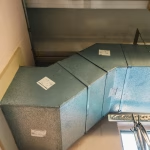There are various types of low pressure transducers available today. Some are virtually the same but are manufactured by different companies. Others are created for specific applications. With so many choices, how do you know which low pressure transducer is right for your job?
Pressure Requirements
You may think that “low pressure” is enough to describe a particular transducer. However, even that terminology is vague in the industry. You could mean lower than normal, or you could mean incredibly low. Be sure to know your actual pressure range requirements in order to choose the best transducer for the application.
Specifications
First, consider the specifications. In particular, specifications regarding accuracy and repeatability are important. You want to make sure that the readings achieved are accurate with minimal differences when repeated in exactly the same way. How much error is allowed for your project will determine which type of low pressure transducer is suitable.
Location Details
Will the transducer need to be on its side? How much torque is required for the process fitting? This information can also be useful to decide which transducer and possible accessories are needed. Sometimes the best option is to choose a transducer that has trim pots so you can adjust it as necessary.
Atmosphere
Always consider how much exposure the transducer will have to extreme hot or cold temperatures. There are specific low pressure transducers for very hot or for very cold situations. A regular transducer will not function properly or provide accurate readings if it is exposed to sharp temperature changes or extreme temperatures for extended periods of time. Also, keep in mind whether or not the transducer may at any time be splashed with chemicals or in the presence of other corrosion-inducing substances. Be sure to select a transducer with housing and a power supply that can withstand exposure to these elements.
Seek Help
If you are overwhelmed by all the requirements and differences in low pressure transducers, you are not alone. To ensure a perfect fit and accurate readings, ask for assistance in selecting the correct product. You may have an internal engineer who can provide some help or just ask the manufacturer or seller yourself. These companies employ experienced team members who will point you in the right direction.





